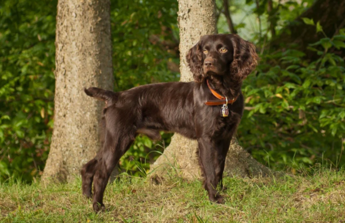Small toy spaniels have been known in Europe and Great Britain since the 16th century and were popular subjects of the most famous painters from the 16th, 17th and 18th centuries. The Cavalier King Charles Spaniel is descended from these toy spaniels.
Early toy spaniels were quite common as ladies’ pets, and during the reign of King Charles II, they were given the royal title King Charles Spaniel (English Toy Spaniel).
When serious show dog breeding began in England, the dog's face structure changed to have the look of thePuguntil an American, Roswell Eldridge, offered a cash prize at the Crufts Dog Show for a dog that resembled those in the early paintings. With careful breeding, the shorter-faced dogs became the English Toy Spaniel, and those that more closely resembled the originals became known as the Cavalier.
The breed is notable for its four distinct color patterns, each of which, at various times, was associated with a particular noble family: Blenheim (chestnut markings on a white background), Tricolor (black markings on a white background), Black and Tan (black with tan markings), and Ruby (a rich red).












